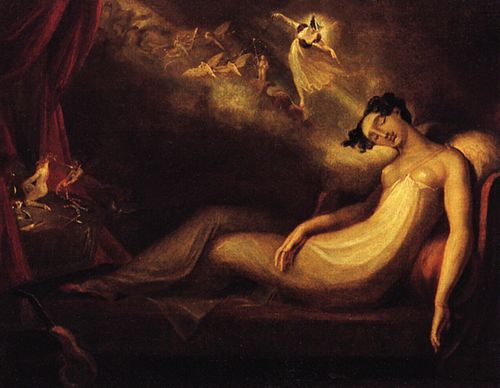Annotation:Dance in Queen Mab
X:1 T:Dance in Queen Mab M:6/8 L:1/8 R:Country Dance or Jig B:Aird - Selection of Scotch, English, Irish and Foreign Airs, vol. 1 (1782, No. 45, p. 16) Z:AK/Fiddler's Companion K:G A|B2c ded|c2B ABc|dBG E2A|FDF G2:| |:A|B2G c2A|B2G A2g|dBG E2A|FDF G2:| |:d|g2d gdB|g2B a2c|Bcd E2A|FDF G2:| |:A|(B/c/dB) c2e|(A/B/cA) B2d|(G/A/BG) (A/B/cA)|FDF G2:|]
DANCE IN QUEEN MAB. AKA and see "Peasant’s Dance (2)," "Pheasant's Dance." English, Jig. G Major. Standard tuning (fiddle). Queen Mab was a pantomime or an afterpiece (a short play after the mainpiece; in this instance, Queen Mab was staged after a revival of The Beggar's Opera) written by Charles Burney [1] (1726-1814) who composed the music, although it also contained music by James Oswald and others) and the actor Henry Woodward and staged in Drury Lane the day after Christmas, 1750. It was advertised: 'A New Entertainment in Italian Grotesque Characters call'd Queen Mab, Harlequin by Mr. Woodward'..." Presumably, the 6/8 jig was a piece from Burney's production. The melody was also entered (along with others in Aird's volume) into the 1790 music manuscript copybook of musician Edward Murphy, of Newport (probably Rhode Island) under the miss-spelled title "Dance in Queen Mal". William Vickers (Northumberland, 1770) and William Biggins (Leeds, 1779) both entered the tune as "Pheasant's Dance" in their music manuscripts, a title that continues to have currency in North-East England. Early printed versions (Rutherford, Thompson) give the tune simply as "Peasant’s Dance (2)." See also Neil Stewart's "Air in Queen Mab" and "Queen Mab" for other tunes associated with the pantomime.

